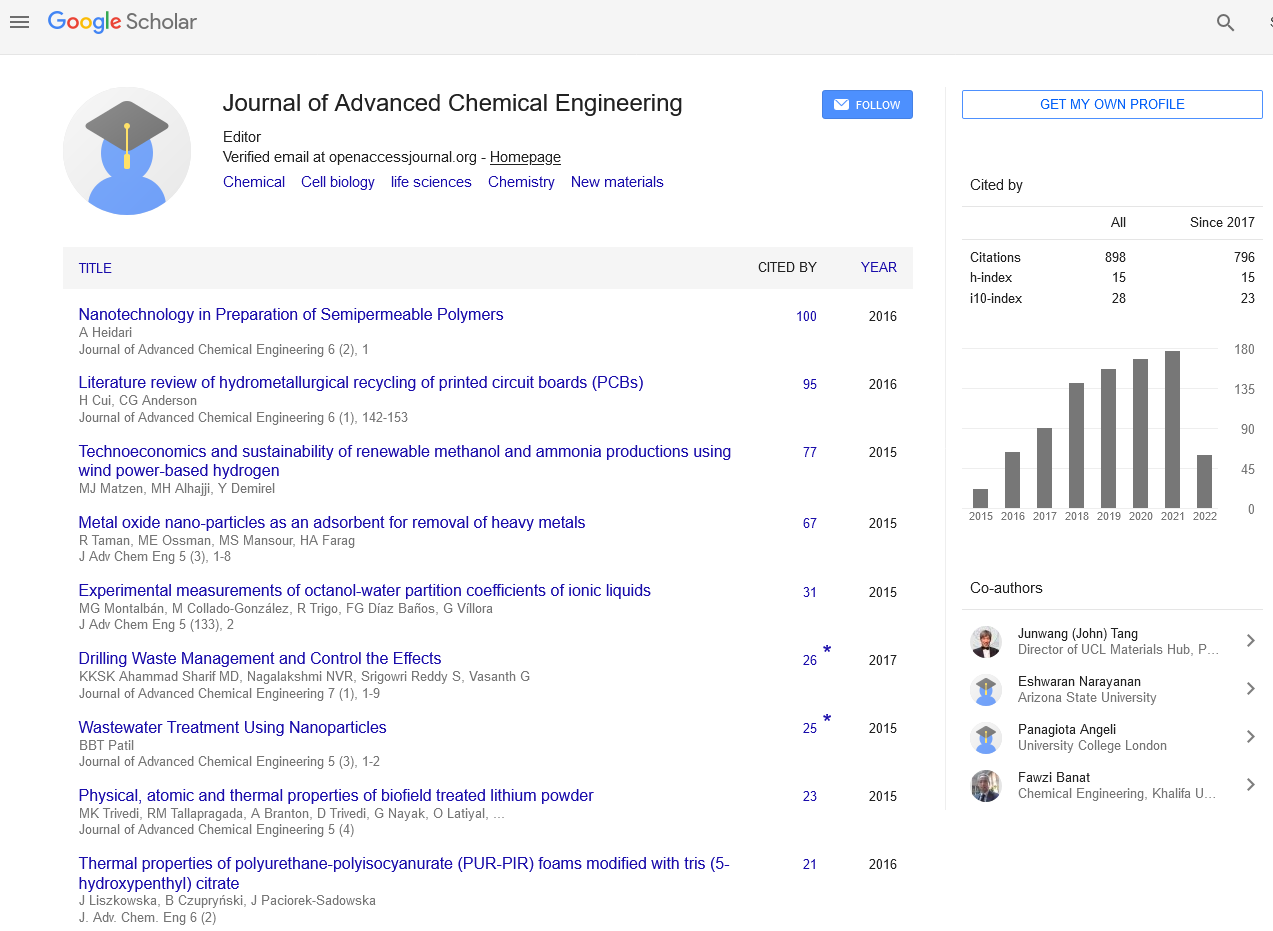Indexed In
- Open J Gate
- Genamics JournalSeek
- Smithers Rapra
- RefSeek
- Directory of Research Journal Indexing (DRJI)
- Hamdard University
- EBSCO A-Z
- OCLC- WorldCat
- Scholarsteer
- Publons
- Geneva Foundation for Medical Education and Research
- Google Scholar
Useful Links
Share This Page
Journal Flyer

Open Access Journals
- Agri and Aquaculture
- Biochemistry
- Bioinformatics & Systems Biology
- Business & Management
- Chemistry
- Clinical Sciences
- Engineering
- Food & Nutrition
- General Science
- Genetics & Molecular Biology
- Immunology & Microbiology
- Medical Sciences
- Neuroscience & Psychology
- Nursing & Health Care
- Pharmaceutical Sciences
Abstract
Dual Thermoelastic ? Pseudoelastic Characterization and Crystallographic Basis of Phase Transformations in Shape Memory Alloys
Adiguzel O
Shape memory effect is a peculiar property exhibited a series of alloy system called shape memory alloys, which have dual characteristics called thermoelasticity and pseudoelasticity, from view point of memory behavior. These alloys take place in class of advanced novel materials with these properties and response to the external conditions. Two successive crystallographic transformations, thermal and stress induced martensitic transformations govern shape memory phenomena in crystallographic basis. Shape memory effect is performed thermally in a temperature interval on heating and cooling after first cooling and stressing processes, whereas pseudoelasticity is performed mechanically by stressing and releasing at a constant temperature in the parent austenite phase region of materials. Shape memory effect is governed by cooling and stressing processes in bulk level, and lattice twinning and detwinning processes in crystallographic basis. Thermal induced martensite occurs along with lattice twinning and ordered parent phase structures turn into multivariant twinned martensite structures in self-accommodating manner, and twinned martensite structures turn into detwinned martensite by means of stress induced martensitic transformation on stressing. Pseudoelasticity is performed by stressing material and releasing in a constant temperature in parent phase region, for which materials are deformed and shape recovery is performed simultaneously upon releasing the applied stress. Pseudoelasticity is performed in non-linear way; stressing and releasing paths are different in the stress-strain diagram, and hysteresis loop refers to energy dissipation. The elementary processes involved in such martensitic transformations are essentially shear deformations, lattice invariant shears, and shuffling of atomic planes. Lattice invariant shears occur with cooperative movements of atoms on close packed planes of ordered parent phase lattice in displacive manner. The atomic plane shuffling and shearing can be considered as elementary processes activated during displacive martensitic transformations. Lattice invariant shear is not uniform in copper based shape memory alloys, and cause to the formation of long-period layered complex martensitic structures with lattice twinning on cooling. Electron diffraction and x-ray diffraction studies performed on two copper based CuZnAl and CuAlMn alloys show that these alloys exhibit super lattice reflections in martensitic condition. Critical transformation temperatures of these alloys are over room temperature, and they are in fully martensitic state at room temperature. A series of x-ray diffractions were taken duration aging at room temperature. Diffraction results show that diffraction angles and peak intensities change with aging. This result refers to a new reaction in diffusive manner and leads to the martensite stabilization.
Published Date: 2020-09-15;


